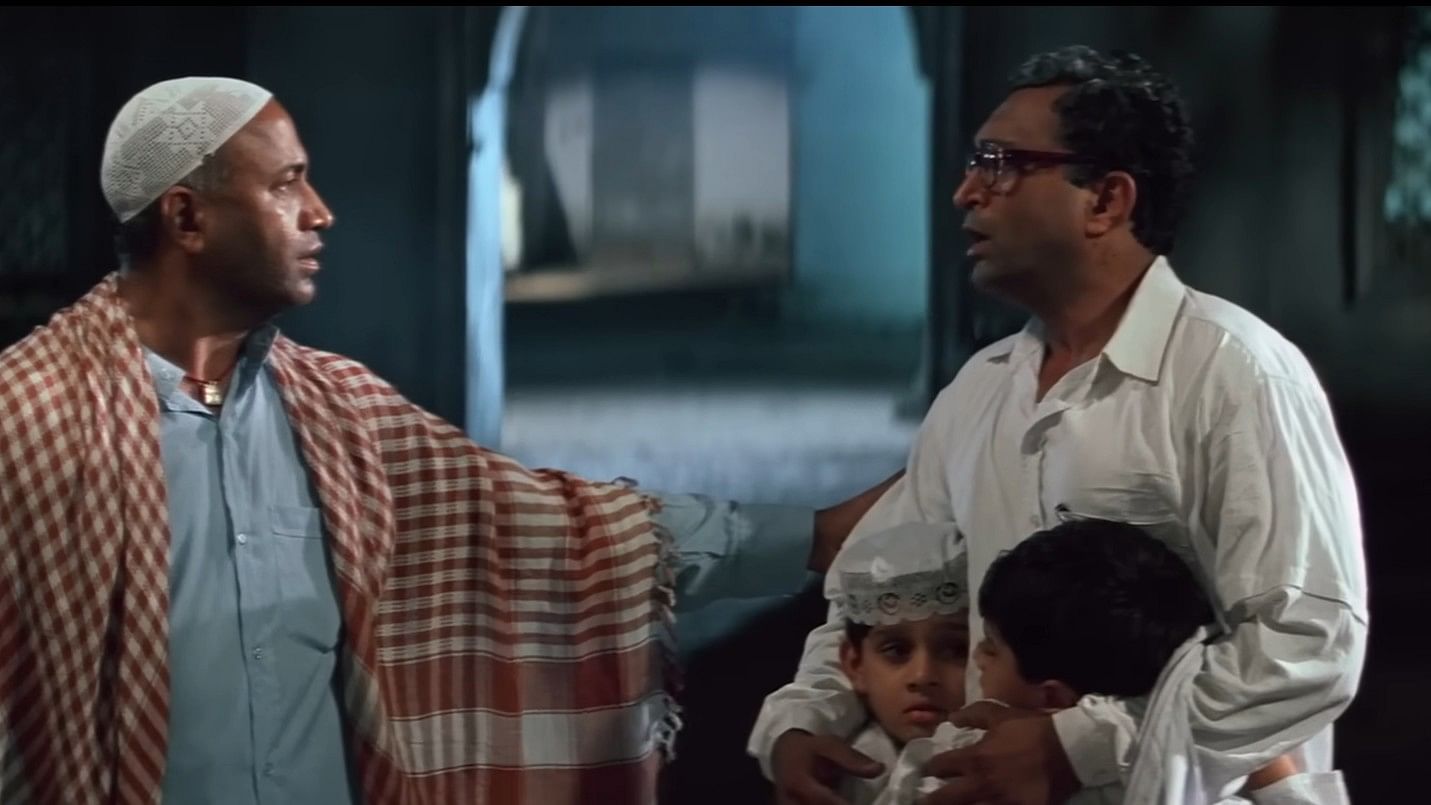
Filmmaker Anand Patwardhan’s 1992 documentary, ‘Ram Ke Naam,’ follows the Vishwa Hindu Parishad campaign to raze a mosque in Ayodhya and build a temple for Ram in its place. It also captures the riots that followed in the wake of the campaign, and the rising power of Hindutva politics.
Patwardhan in an interview with The Wire mentioned he is disappointed his film is still relevant — the purpose of the documentary was to inform the people about the politics behind the temple campaign, the history of the mosque, and the anguish of the minorities in the wake of L K Advani’s nationwide rath yatra.
Now that the temple has been built and inaugurated, it is understandable that he feels his attempt to create a dialogue has gone in vain. Patwardhan’s works show how communities are divided, and nudge the audiences to check for agencies of change and resistance.
Even back then, despite a Congress government led by P V Narasimha Rao in power, Patwardhan’s National Award-winning film had faced difficulties in getting a censor certificate. It wasn’t shown on TV either. The narrative is powerful and invites the viewer to take a stand. Three decades later, on January 22, four persons were arrested over the screening of the documentary in Hyderabad after Hindutva groups stormed the venue. ‘Ram Ke Naam’ ends with a clip of a BJP rally justifying the assassination of Mahatma Gandhi by Nathuram Godse.
‘Hey Ram’ (2000), set against the Partition and the assassination of Gandhi, is an alternative history story, revolving around Saket Ram, chosen to assassinate Gandhi. Besides playing the lead, Kamal Hassan also directed the film. ‘Hey Ram’ explores the rise of the right wing, and suggests that to understand the politics of the rath yatra, we should go back and learn about the assassination of Gandhi. After Gandhi is shot dead by Godse, a British officer in ‘Hey Ram’ sighs in relief that it was not a Muslim who committed the crime.
Mani Ratnam’s 1995 film, ‘Bombay’ poignantly showcases the 1993 Bombay riots by tracking the life of an interfaith couple. The film opens in a traditional Tamil Nadu village where Muslims and Hindus co-exist. A Muslim girl and a Brahmin boy fall in love and elope to Bombay (present day Mumbai). With its cosmopolitan culture, Mumbai is seen as a place where one’s religion and caste do not matter. This romantic impression of the city draws the couple to its embrace. ‘Bombay’ starts with the hope that there is space for co-existence. It then shows politics taking over the socio-cultural life of the city after the demolition of the Babri Masjid in 1992.
Back when it was released in 1995, just three years after the disaster, there was some hope that we could get over it together. Now, after the Ram Mandir inauguration, one connects more with the third act of ‘Dil Se’ than the third act of ‘Bombay’ — ‘Dil Se’ ends on a tragic note while ‘Bombay’ concludes with a scope of optimism. ‘Dil Se’ now overlaps ‘Bombay’ and that says a lot about 2024.
Anurag Kashyap’s ‘Black Friday’ was released in 2004. It is unlike ‘Bombay’ in that it has no room for romance. In fact, it forces you to encounter the harsh realities of a communally divided India. What unfolds is a violent and fractured socio-political situation. Based on the 1993 bomb blasts that followed the communal riots in Mumbai, the film shows the ugliness of communal disharmony spreading across the country. ‘Black Friday’ tells you that the imagined romantic mindscape of India has been burned down.
Looking back, ‘Black Friday’ seems like a mainstream version of Saeed Akhtar Mirza’s ‘Salim Langde Pe Mat Ro’ (1989). It is set in the aftermath of the 1985 Ram Janmabhoomi movement, in the years before the rath yatra. It is about Salim Pasha, a small-time thug with a limp. He is shaken after watching a documentary about the Bhiwandi communal riots of 1985. When he decides to change his lifestyle, he gets an offer to stir up riots for a huge sum of money.
Saeed Mirza shows marginalised Muslims on the streets of Bombay and connects their plight to the lack of education and poverty. This is reflected again in present day India where unemployed young adults roam the streets promoting communal disharmony.
All these films, whether independent or mainstream, reflect on our religious co-existence and help us understand the socio-political path the country has chosen. Much of what has happened in the past four decades is irreversible now. We can return to each of these films to see what we have lost.
(As told to Pranati A S)